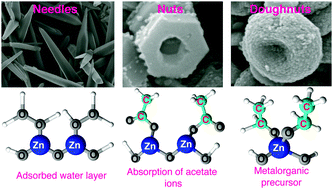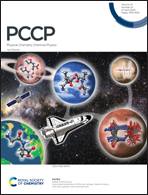Growth and formation mechanism of shape-selective preparation of ZnO structures: correlation of structural, vibrational and optical properties
Abstract
A shape-selective preparation method was used to obtain highly crystalline rod-, needle-, nut-, and doughnut-like ZnO morphologies with distinct particle sizes and surface areas. We study the nucleation and growth mechanism of those structures and the influence of physical–chemical parameters, such as the solvent and the pH of the solution, on the morphology, as well as the structural and optical properties. A clear correlation between the growth rate along the c-axis and surface defects was established. Our results suggest that the needle- and rod-like morphologies are formed due to the crystal growth orientation along the c-axis and the occurrence of crystalline defects, such as oxygen vacancies and interstitial Zn2+ located at the surface, whereas nuts and doughnuts are formed due to growth along all crystalline planes except those related to growth along the c-axis. Based on the experimental results, growth mechanisms for the formation of ZnO structures were proposed. We believe this synthetic route will be of guidance to prepare several materials whose shapes will depend on the desired applications.

- This article is part of the themed collection: 2020 PCCP HOT Articles


 Please wait while we load your content...
Please wait while we load your content...